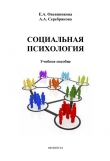
Текст книги "Социальное влияние"
Автор книги: Филип Зимбардо
Соавторы: Майкл Ляйппе
Жанр:
Психология
сообщить о нарушении
Текущая страница: 51 (всего у книги 51 страниц)
Wood, W. (1982). Retrieval of attitude relevant information from memory: Effects on susceptibility to persuasion and on intrinsic motivation. Journal of Personality and Social Psychology, 42, 798–810.
Wood, W., Kallgren,C.A., and Priesler, R. M. (1985). Access to attitude – relevant information in memory as a determinant of persuasion: The role of message attributes. Journal of Experimental Social Psychology, 21, 73–85.
Wood, W., Wong,F. K, and Сhachere J. 0.(1990). Effects of media violence on viewers' aggression in unconstrained social interaction. Psychological Bulletin, in press.
Wrightsman, L. S. (1987). Psychology and the legal system. Monterey, CA: Brooks/ Cole.
Wu, C, and Shaffer, D. R. (1987). Susceptibility to persuasive appeals as a function of source credibility and prior experience with attitude object. Journal of Personality and Social Psychology, 52, 677–688.
Yates, S. M., and Aronson, E. (1983). A social psychological perspective on energy conservation in residential buildings. American Psychologist, 38, 435–444.
Yukl, G., and Falbe, С. М. (1990). Influence tactics and objectives in upward, downward, and lateral influence. Journal of Applied Psychology, 75, 132–140.
Zajonc, R.B. (1968). Attitude effects of mere exposure. Journal of Personality and Social Psychology Monograph, 9 (2, pt. 2).
Zajonc, R. B. (1980). Feeling and thinking: Preferences need no inferences. American Psychologist, 35, 151–175.
Zanna, M. P. (1990). Message receptivity: A new look at the old problem of open – vs. closed – min – dedness. In A. Mitchell (Ed.), Advertising exposure, memory, and choice. Hillsdale, NJ: Erlbaum.
Zanna, M. P., Kiesler, С A., and Pilkonis, P. A. (1970). Positive and negative attitudinal affect established by classical conditioning. Journal of Personality and Social Psychology, 14, 321–328.
Zanna, M. P., and Rempel, J. K. (1988). Attitudes: A new look at an old concept. In D. Bar – Tal and A. W. Kruglanski (Eds.), The social psychology of knowledge. New York: Cambridge University Press.
Ziesel, H., and Diamond, S.S. (1976). The jury selection in the Mitchell – Stans conspiracy trial. American Bar Foundation Research Journal, 1, 151–174.
Zillman, D., and Bryant, L. (1974). Effect of residual excitation on the motivational response to provocation and delayed aggressive behavior. Journal of Personality and Social Psychology, 30,782–791.
Zimbardo, P. G. (1960). Involvement and communication discrepancy as determinants of opinion conformity. Journal of Abnormal and Social Psychology, 60, 86–94.
Zimbardo, P. G. (1969). The cognitive control of motivation. Glenview, IL: Scott, Foresman.
Zimbardo, P. G. (1971). Coercion and compliance. The psychology of police confessions. In С Perruci and M. Pilisuk (Eds.), The triple revolution emerging (pp. 492–508). Boston: Little, Brown.
Zimbardo, P. G. (1977). Shyness: What is it, what to do about it. Reading, MA: Addison – Wesley.
Zimbardo, P. G. (1988). Psychology and life (12th ed.). Glenview, IL: Scott, Foresman.
Zimbardo, P. G., Weisenberg, M., Firestone, I., and Levy,B. (1965). Communicator effectiveness in producing public conformity and private attitude change. Journal of Personality, 33, 233–256.
Zuckerman,M., DePaulo, В., Rosenthal, R. (1981). Verbal and nonverbal communication of deception. In L. Berkowitz (Ed.), Advances in experimental social psychology (vol. 14, pp. 1–59). New York: Academic Press.
Zullow, H. M., Oettingen, G., Peterson, C, and Seligman, M. E. P. (1988). Pessimistic explanatory style in the historical record. American Psychologist, 43, 673–682.








